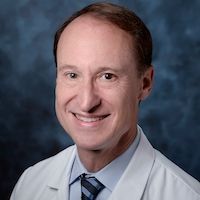Barbershop Blood Pressure Intervention Reports One-Year Benefits
The community-based program intent on improving black men's blood pressure care will revamp its practice headed into 2019.

Ronald G. Victor, MD
Nine months after it was first presented at the 67th American College of Cardiology (ACC) Scientific Session in Orlando, FL, a study focused on a unique, community-based practice to reduce blood pressure in hypertensive black men is returning more positive results, and a new plan for 2019.
The “barbershop intervention” conducted by the Cedars-Sinai Smidt Heart Institute—in which 52 Los Angeles County barbershops were split to serve as either a site for pharmacist-led intervention or as a control group—was designed to get care providers in front of hypertensive at-risk or susceptible black men. After 6 months of practice, investigators reported that those who received consultation and care at pharmacist-assisted barbershops are now reporting significant reductions in blood pressure compared to the control group.
Led by the late Ronald G. Victor, MD—the associate director of the Smidt Heart Institute at Cedars-Sinai Hospital who died from metastatic pancreatic cancer in September—investigators trained barbers to measure customers’ blood pressure and promote follow-up visits with pharmacists, who would prescribe blood pressure therapy under a collaborative practice agreement with the patients’ primary care physicians.
Now, they are continuing the program with fewer in-person pharmacist visits in an effort to assess the program’s sustainability over 1 year while reducing the burden of travel on pharmacists to and from barbershops.
The program has major success to build upon in its second year. From baseline to 12 months, mean interventional patient systolic blood pressure decreased from 152.4 mmHg to 123.8 mmHg, respectively. In the control group, mean blood decreased just 7.2 points (154.6 mmHg to 147.4 mmHg).
The trial reached its target blood pressure mark of <130/80 mmHg—set by in compliance of new American Heart Association and ACC guidelines from 2017.
At the time of the six-month data being shared at the ACC meeting, Victor attributed the program’s early success to a litany of elements: the barbers’ involvement in care, the thoroughness of the clinical practice, the fact that pharmacists were delivering care to a familiar setting rather than a standard office.
“It is often a challenge to get people who need blood pressure medication to take them, even as the costs and side effects have gone down over the years,” Victor said at the time. “With this program, we have been able to overcome that barrier.”
Investigators have previously expressed interest in expanding the program internationally—though its significance in the US may not be replicated. Black men report significantly greater rates of high blood pressure than their white peers, and are at least at a 30% greater risk of cardiovascular disease-related death.
In an interview with MD Magazine® this year, Charles Modlin Jr., MD, MBA, Cleveland Clinic urologist, kidney transplant surgeon, and organizer of the annual Minority Men’s Health Fair, advocated for these community-based efforts to reach patients at great risk who may not be coming to the doctor’s office.
“If you don’t have an effective means of engaging or empowering the community to take advantage of screenings and opportunities, you’re not going to be able to have an audience with them to notice the early state of prostate cancer or other conditions,” he said.
Such was the original intent of Victor with the barbershop program.
“If this model was scaled up and sustained, millions of lives could be saved, and many heart attacks and strokes could be prevented,” he said.